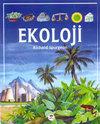Ecotype Traits of the Natural Populations of the Birdsfoot Trefoil (Lotus corniculatus) in Association with the Geographical Parameters of the Sampling Sites
Q3 Environmental Science
引用次数: 2
Abstract
Birdsfoot trefoil, which is native to Turkish flora, is the most valuable and common Lotus species in Turkey. However, existing information on the ecology, distribution, and plant traits of the Birdsfoot trefoil is scant for the natural flora of Turkey. Therefore, seeds from 126 wild birdsfoot trefoil (WBT) populations were collected from plants spontaneously occurring in natural pasture and rangelands located (altitudes ranged from 5 to 2193 m a.s.l.) in the Black Sea Region of Turkey. These populations were grown under the same ecological conditions in 2010 and 2011 to determine the ecotype traits of the WBT and the relationships between these traits and the geographical features of the locations. The WBT was present (1-25% of botanical composition) in all ranges of altitude, although there was an increase in the presence and frequency of WBT with increasing altitude until 1000 m a.s.l. There were negative correlations between some traits (dry matter and seed yields, morphologic, and also root and crown-rot resistant traits) and altitude at which the seeds were collected. The data revealed that there was evidence of considerable inherent variations in all traits and thus there was a huge genetic diversity in the region. When populations were compared for agronomic and morphologic traits, the best populations were between altitudes of 251 and 500 m. It was observed that all populations had a spreading growth habit, except for 05TA01, 05TA02, and 60ER01 (semi-erect) and 60TU02 (semi-spreading). The results suggested that new grazing, forage types, and disease resistant WBT varieties may be bred from the studied populations.三叶莲自然居群生态型特征与采样点地理参数的关系
鸟足三叶草,原产于土耳其植物群,是土耳其最有价值和最常见的莲花品种。然而,关于鸟足三叶草的生态、分布和植物特征的现有信息对于土耳其的自然植物群来说是缺乏的。为此,在土耳其黑海地区(海拔5 ~ 2193 m)的天然牧场和牧场上,采集了126个野生鸟足三叶草(WBT)种群的种子。2010年和2011年在相同的生态条件下对这些种群进行生长研究,以确定WBT的生态型性状及其与地点地理特征的关系。在海拔1000 m之前,随着海拔高度的增加,WBT的存在和频率呈增加趋势,但在所有海拔范围内都存在WBT(占植物组成的1-25%)。某些性状(干物质和种子产量、形态、根系和抗冠腐病性状)与种子采收的海拔高度呈负相关。数据显示,所有性状都存在相当大的内在变异,因此该地区存在巨大的遗传多样性。在农艺性状和形态性状比较中,251 ~ 500 m为最佳群体。除05TA01、05TA02、60ER01(半直立)和60TU02(半平展)外,其余居群均呈平展生长习性。结果表明,可以从研究群体中培育出新的放牧、饲料类型和抗病品种。
本文章由计算机程序翻译,如有差异,请以英文原文为准。
求助全文
约1分钟内获得全文
求助全文
来源期刊

Ekoloji
环境科学-生态学
CiteScore
1.10
自引率
0.00%
发文量
0
审稿时长
>12 weeks
期刊介绍:
Cessation. Ekoloji is an international journal that focuses on papers that report results from original research on all disciplines engaged in the field of environmental research. We welcome articles that cover the entire spectrum of environmental problems and environmental pollutants, whether chemical, biological or physical. Its coverage extends to all environmentally related issues: air and water pollution, solid waste, noise, recycling, natural resources, ecology and environmental protection. It includes articles on basic and applied environmental pollution research, including environmental engineering and environmental health. All types of pollution are covered, including atmospheric pollutants, detergents, fertilizers, industrial effluents, metals, mining wastes, oil, pesticides, plastics, radioactive materials and sewage. It also includes research papers on ecological and environmental issues such as climate change, biodiversity. The primary criteria for publication are scientific quality and ecological/environmental significance.
The journal will be read and contributed to by biologists, applied ecologists, environmental scientists, natural resource specialists, environmental engineers, environmental health specialists, agro-ecologists, veterinaries, agricultural engineers, landscape planners and designers. The journal welcomes full "research papers" and short "research notes", only in the English language.
 求助内容:
求助内容: 应助结果提醒方式:
应助结果提醒方式:


